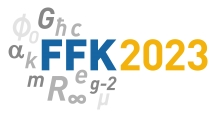Speaker
Description
A number of experiments at CERN’s Antiproton Decelerator aim to measure the properties of antihydrogen to find structural differences hinting at CPT symmetry breaking that would explain the observed baryon-antibaryon asymmetry in our universe. These experiments detect antihydrogen through annihilation making the antiproton-nucleus ($\bar{p}A$) annihilation one of the main processes of interest.
The Monte Carlo simulations of these events rely on physics models developed for high energies and theoretically extrapolated to lower energies. Previous measurements from the AD experiments, including the ASACUSA-Cusp collaboration show that the simulations do not reproduce the measured data. As even the annihilation mechanism itself is not well understood, a permanent beamline for slow extraction of sub-keV antiprotons is being set up at the ASACUSA facility, in order to measure the $\bar{p}A$ annihilation at rest for fifteen nuclei. The total multiplicity of the prongs and their kinetic energy distribution will be measured with a novel detection system using Timepix4 pixel detectors covering most of the solid angle. Individual annihilation events will be reconstructed by extrapolating the recorded pion tracks, revealing their angular distribution. This poster will give an overview of the experiment whose results will be implemented in a new simulation code for $\bar{p}A$ reactions.

